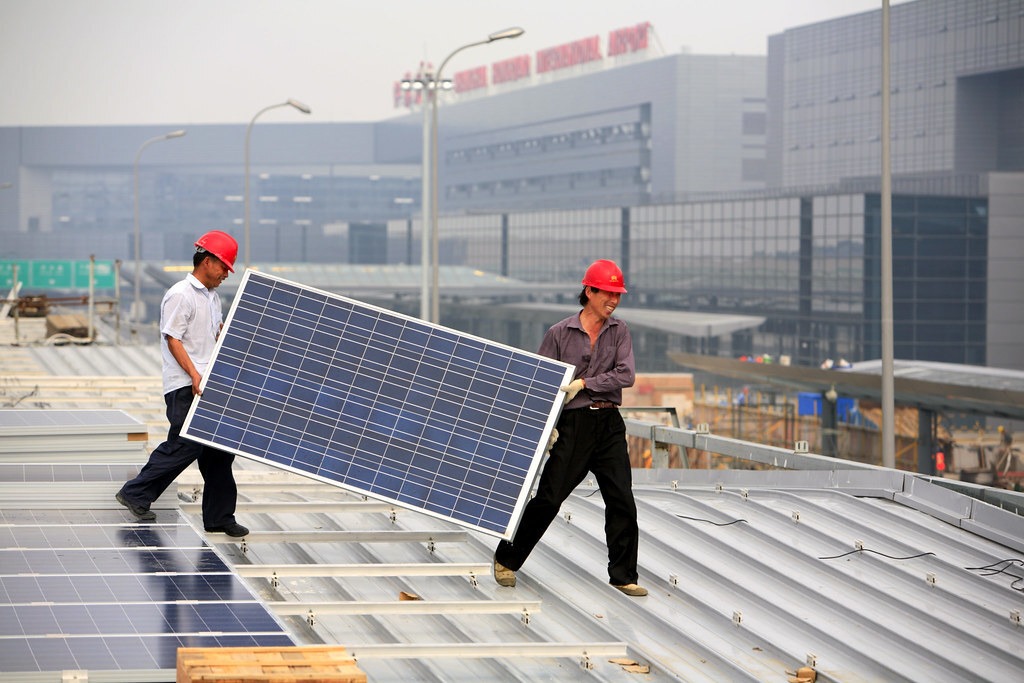Sevinç İrem BALCI
Due to the scarce sources of energy in the world, the leading states now started the search for more durable and renewable energy sources, as a rising trend. Renewable energy both aims to reaching energy resources in a cheaper way and prevent environmental pollution. China, one of the biggest producers of many goods and biggest emitter of greenhouse gas in the world, also aims to increase the renewable energy sources and invest in that area. Therefore, China has been at the forefront of global renewable energy supply and demand for several years, accounting for roughly 40% of capacity increase from 2015 to 2020. Europe, the United States, and India were the next to arrive. Between 2021 and 2026, the four markets are expected to account for 87 percent of worldwide capacity expansion, up from 80 percent in the previous period.
China will develop an integrated institution and policy system for low-carbon energy development by 2030, according to a statement released jointly by the National Energy Administration and the National Development and Reform Commission on February 10. Non-fossil fuels will play an important role in ensuring a steady domestic energy supply, according to the statement.
In 2020, China’s share of the market reached 50% for the first time, owing to a rush to complete projects before government subsidies were taken out. China’s strong development is likely to slow in 2022 after a two-year period of exceptional expansion. Despite this, the IEA predicts that China will continue to lead the market for the next five years, accounting for 43% of global renewable capacity growth.
China’s one of the significant resources for producing renewable energy is based on solar energy. In the following years, it is expected that the production of energy from solar power would increase. After adding 85 gigawatts (GW) in 2021, China’s solar power installed capacity may surpass 388 GW this year, indicating a 28 percent increase over 2021’s 20 percent. A structural move toward renewable energy, as well as unmet demand of 10 GW in 2021, may pave the way, with raw material shortages providing a boost. In 2022, increased upstream polysilicon production may cause supply-chain bottlenecks.
The new projects in the utility-scale segment will add 48 GW of capacity, while the small-scale segment will contribute 37 GW, owing to increased electricity rates and reduced production costs. According to our predictions, total installed capacity might reach 648 GW by the end of 2025, representing a 21 percent annual growth rate.
Besides the solar power, China is also investing in energy production from wind power and becoming a leader of wind power capacity in the world. According to China Energy Investment Corporation (China Energy), the installed capacity of wind power by China Energy reached 50 GW, and the installed capacity of photovoltaic power surged 4.1 times from a year ago to stand at 8.6 GW during the period. In 2021, China Energy started constructing new energy projects with a capacity of 19.68 GW. It added 10.89 GW of new energy power capacity last year, the highest in history.
The latest initiative of China is the Winter Olympic Games of 2022. Winter Olympics have started in January 4, and it was labelled as the first “green” Olympics. The renewable power trade for the games is managed by the State Grid Beijing Company. The majority of the electricity originates from 11 wind and solar power producing firms in Zhangjiakou. By the end of 2021, the organizers claim to have acquired 171GWh of “green” power – wind and solar – and 237GWh by the end of 2021. According to these figures, the total amount of power used at the Olympic venues will be roughly 160GWh.
The building of the Zhangbei renewable energy flexible direct current (DC) grid has been hastened as a result of the winter Olympic games. The Beijing 2022 Olympic Games will rely on this freshly constructed infrastructure in Zhangjiakou City, a $2 billion project that began in June 2020 to distribute wind and solar electricity and use pumped hydro storage to control output changes.

